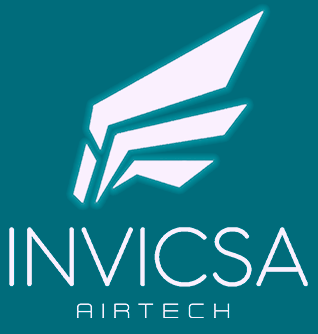Contour lines with drones
At Invicsa Airtech, we specialise in generating accurate contour lines using advanced drone technology. Our mission is to provide detailed topographic data that allows a faithful representation of the terrain for projects in construction, agriculture, mining and more. With a team of highly skilled professionals and a dedication to excellence, we guarantee accurate and efficient results. Trust us to transform your projects with precision and clarity – find out how our contouring solutions can power your next project!
Contour lines with drones
Contour lines are lines on a map that represent points of equal altitude above sea level. These lines allow the topography of a terrain to be visualised in a two-dimensional way, showing elevations, depressions and the slope of the terrain. Contour lines are essential for various fields such as engineering, construction, urban planning and agriculture, as they provide a clear and detailed representation of the earth’s surface. Through these curves, it is possible to better understand the shape of the land and make informed decisions in the design and development of projects.

What are the advantages of drones?
The use of drones to generate contour lines has revolutionised surveying thanks to the numerous advantages offered by these devices:
- Accuracy and Detail: Drones equipped with advanced cameras and sensors can capture high-resolution imagery, providing accurate topographic data that enables the creation of detailed contour lines.
- Efficiency and Speed: Drones can cover large areas in less time compared to traditional methods, speeding up the process of data collection and delivery of results.
- Accessing Difficult Terrain: Drones can fly over rugged or inaccessible terrain, obtaining data from areas that would be difficult or dangerous to reach by conventional methods.
- Cost-effectiveness: By reducing the need for equipment and personnel on the ground, the use of drones significantly reduces the costs associated with topographic surveys.
- Improved Safety: By minimising human presence in dangerous or inaccessible areas, drones increase the safety of personnel during survey operations.
Drone-generated Contour Line Applications
Drone-generated contours have a wide variety of applications in multiple sectors, providing detailed and accurate topographic data that is essential for project planning and execution. Some of the main applications include:
- Construction and Urban Planning: In infrastructure design and development, contour lines are crucial for land planning, drawing up plans and assessing the feasibility of projects. They help to identify the best locations for construction and to design efficient drainage systems.
- Precision Agriculture: Farmers use contour lines to plan irrigation, control soil erosion and optimise resource use. Contour lines identify areas that require special attention and improve the efficiency of farming operations.
- Mining and Quarrying: In the exploitation of mineral resources, contour lines help to plan excavations and calculate material volumes. They facilitate monitoring the progress of operations and ensure that mining plans are followed efficiently and safely.
- Natural Resource Management: Contour lines are essential for natural resource management and conservation, allowing a better understanding of the topography and hydrology of protected areas. They assist in planning hiking trails and watershed protection.
- Infrastructure Development: In the construction of roads, bridges and other infrastructure, contour lines provide critical information about the elevation and slope of the terrain. This is vital for designing projects that are safe, sustainable and efficient.
- Disaster Prevention and Management: Contour lines are used to assess risks from floods, landslides and other natural disasters. They help to plan mitigation measures and develop emergency response strategies.
- Research and Education: In academia, drone-generated contour lines are used in geographic, geological and environmental studies. They provide accurate data for research and are valuable tools for teaching and learning.
